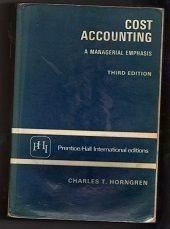
Estancia, Inc. is a large company that owns restaurants, has a wine division and a frozen food division. Management of the company gives its division managers autonomy in running their divisions for both operating and investment decisions. Estancia is considering how it should compensate Mr. Jim Beam, the general manager of the frozen food division. Click the icon to view the proposals.) Read the requirements Requirement 1. Evaluate the three proposals, specifying the advantages and disadvantages of each. (Select all that apply.) I A. Proposal 1 does not subject Beam to any risk, but also does not provide incentives for Beam to put in extra effort in the position. It allows him to concentrate his efforts on the division, which could lead to better performance and reduce turnover due to the stress level of the position. OB. Proposal 1 subjects Beam to a large amount of risk and provides incentives to motivate Beam to put in extra effort in the frozen food division. Paying Beam a fixed salary encourages him to perform better so that he may be considered for a raise in the future. C. Proposal 2 motivates Beam to put in extra effort to increase RI because his rewards would increase with the increase in RI. Compensating Beam solely on the basis of RI subjects Beam to excessive risk because there are factors that Beam does not have control over. Using RI as a means to reward Beam creates an environment for goal congruence. OD. Under proposal 2, Estancia must pay Beam additional amounts within the structure of the Rl-based arrangement. Compensating Beam only on the basis of performance will cost Estancia more money, on average, than paying Beam a flat salary. Estancia must decide whether the benefits of motivating additional effort justify the higher costs of performance-based rewards E. Proposal 3 is beneficial to Beam because he receives a salary and a bonus based on RI. This proposal is not beneficial to Estancia because they have the added cost of paying a bonus in addition to a flat salary. Increased RI does not mean much to Estancia if it has to pay Beam additional money. OF. Proposal 3 leads to greater goal congruence between the frozen food division and Beam since there is some salary and some performance-based bonus in the compensation arrangement. This balances the benefits of incentives against the extra costs of imposing uncontrollable risk on the manager. OG. Proposal 2 motivates Beam to put in extra effort to increase RI because his rewards would increase with the increase in RI. This proposal subjects Beam to little risk since the division's RI depends solely on Beam's effort. Proposal 2 is favorable to the company because Ri leads managers to accept new investment opportunities. - More info Proposal 1 calls for paying Beam a fixed salary. Proposal 2 calls for paying Beam no salary and compensating him only on the basis of the division's RI (residual income), calculated based on operating income before any bonus payments. Proposal 3 calls for paying Beam some salary and some bonus based on RI. Print Done







